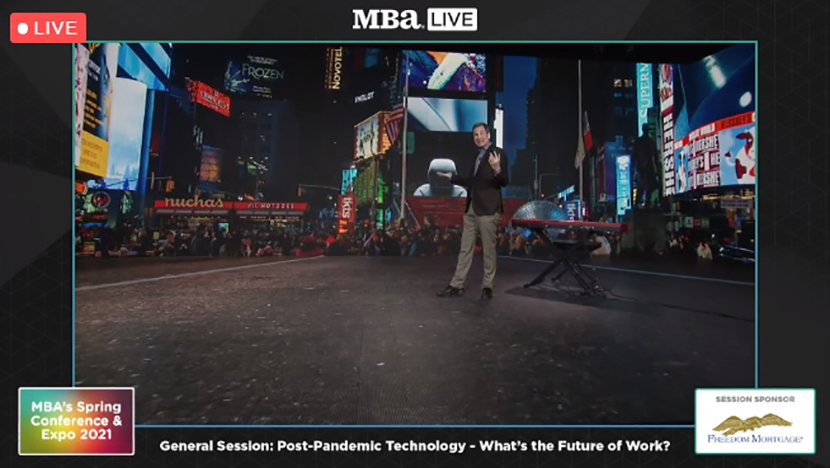
#MBASPRING21: The Future of The Workplace

The office has evolved over past decades, but the pandemic greatly increased how–and how fast–offices are changing, New York Times columnist and CBS Sunday Morning Contributor David Pogue said during the Mortgage Bankers Association’s Spring Conference & Expo 21.

“For a while, the virus was on a downward slope,” Pogue said. “It’s now taking an uptick. So we don’t really know when it will end. But everyone is wondering when will we go back into the office and what will the office look like when we get there?”
Pogue said the layout of offices will certainly change due to the pandemic. “There’s no surprise there, because office layouts have changed over the decades,” he said. “From rows of desks housing sewing machines in the 1800s to clusters to the cube farms of the 1980s. In the 2000s, tech industry bosses became interested in making the office a ‘fun’ place to work. Their thinking was that if an employee never left the office, they would do more work. So their offices became clever and well designed.”
In recent years, office space has moved toward open floor plans, Pogue noted. “Open floor plans are supposed to foster collaboration, and this is the era of collaboration,” he said. “The problem with that thinking is: it’s wrong.”
Pogue noted in one study, Harvard University placed microphones and location sensors on employees of two Fortune 500 companies, one moving toward an open floor plan office, one to a more closed plan. It found that in an open floor plan, collaboration dropped by 70 percent. “People tend to just put on their headphones,” he said.
Harvard also found that employees in open floor plan offices take 62 percent more sick days, because there are no barriers to germs spreading. “Open floor plans are also bad when it comes to noise,” Pogue said. “You don’t need or want to hear every single call or conversation.”
The open floor plan might receed in popularity as the pendulum swings back toward more individual offices, Pogue said. He forecast the post-pandemic office might include a special “don and doff room” for checking employees in and checking their temperature. “It might have an isolation room if you have a temperature,” he said. “The desks could be set up to face away from each other. And conference areas will likely be smaller so fewer people congregate.”
Office practices will also need to change, Pogue noted; there will be more rigorous cleaning and health checks and employees might need to schedule their attendance to minimize office overcrowding. “There will certainly be no more snacks served in communal bins,” he said. “And there will be a lot more reminder signage to wash your hands and such.”
Companies that manufacture “touchless” gear such as infrared sensors for doors, water faucets and elevator buttons will see business boom, Pogue said.
“All in all, it seems like some of these changes may be an overcorrection,” Pogue said. “Let’s be clear: there will be other pandemics. Other viruses will come up and COVID could return, so some of these changes will stay and some won’t. But I don’t think all population of offices will be wearing facemasks three years from now.”
